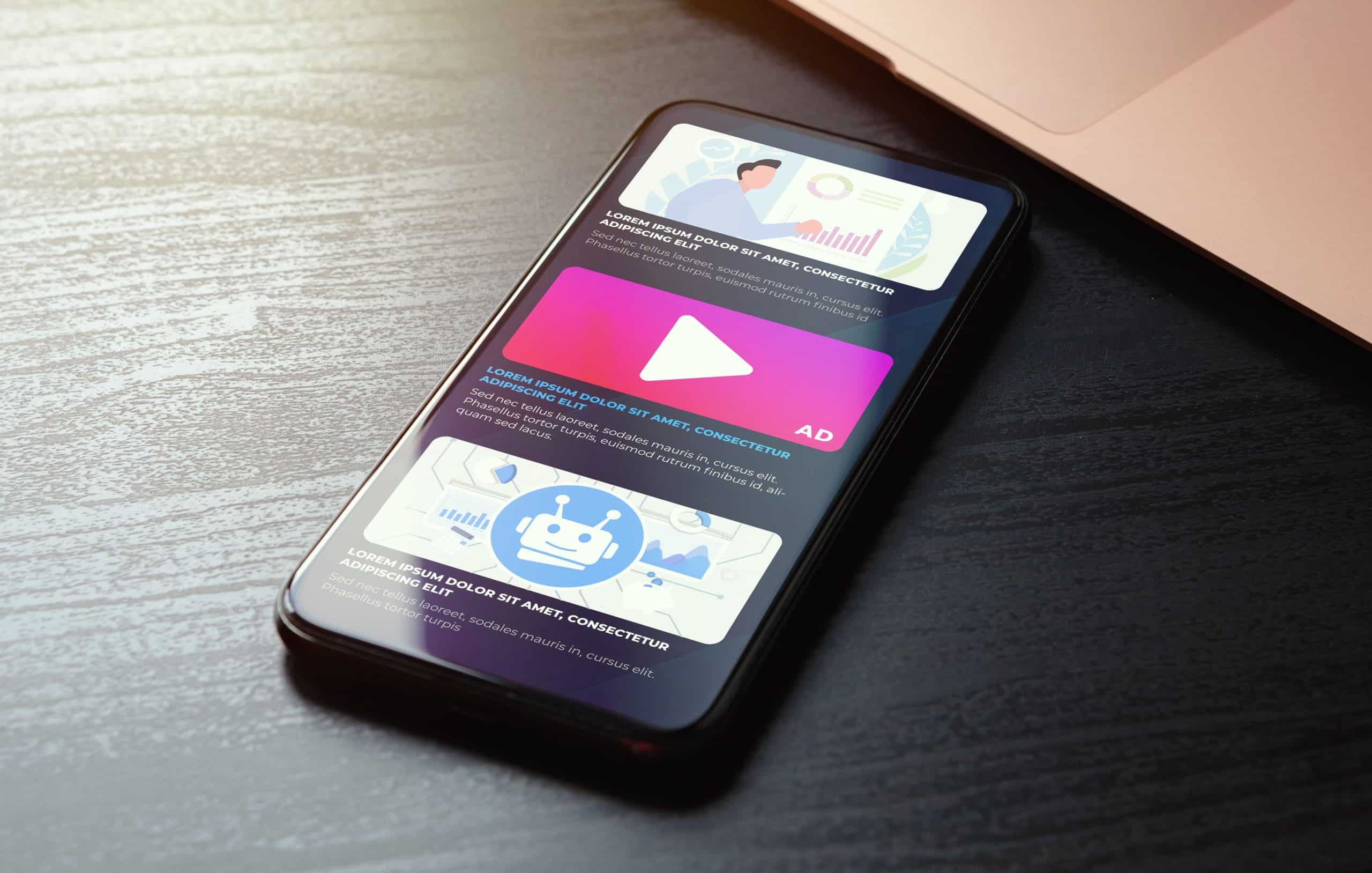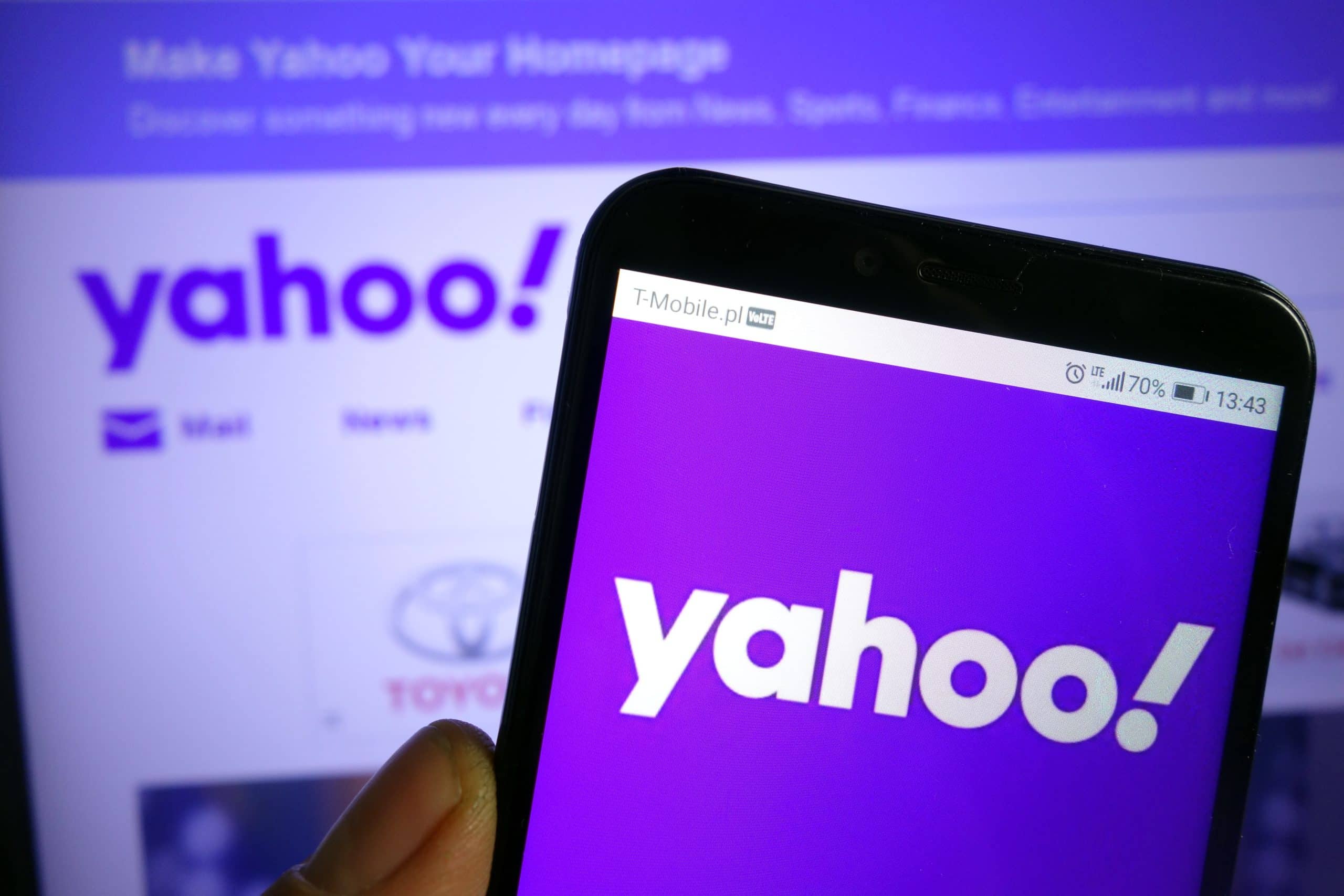Marketers need ads to expand awareness and grow revenue. And yet, consumers — myself included — often go to great lengths to block pop-ups, dodge banners, and generally turn a nose up to blatant monetization efforts. For many marketers, the answer to those challenges is native advertising.
What Is Native Advertising?
Native advertising is a form of paid media where ads blend seamlessly into the content and format of the platform they appear on. It pairs the principles of paid placement with an organic experience that doesn’t disrupt users. It turns ads into natural extensions of the platform or medium on which they appear, whether it’s a carefully curated life insurance infographic in your favorite industry journal or (again, in my case) a drool-worthy recipe seamlessly placed on your favorite cooking website.
Today, native marketing is integral to brand awareness and should function alongside other primary pillars of marketing strategy. Whether you’re searching for a new way to grow your brand or a better understanding of this marketing principle, here’s what you need to know about what native marketing is, and how it works.
What Business is Native Advertising Best For?
The short answer? Most businesses. When implemented thoughtfully and deliberately, native advertising can be a powerful tool for businesses across nearly every industry. Because the ads are designed to integrate seamlessly with surrounding content, native marketing represents an accessible and effective strategy for many businesses.
A B2B company specializing in telecommunications, for example, is just as well suited for native marketing as a company trying to increase awareness of a D2C brand that sells clothing subscriptions to a specific audience. In both cases, each company can leverage carefully curated articles, blogs, editorials, and social posts to engage with customers subtly yet effectively. All it takes is creative content, stand-out storytelling, and the right placement.
There’s no one-size-fits-all approach to native marketing, and there is no shortage of placement opportunities and publications available. If you have an audience and they engage with content, a conversation around native marketing is worth considering as part of a robust marketing strategy.
How Does Native Advertising Work?
At its foundation, native marketing exists on the principles of supply and demand. Publishers seek revenue through ad placements, and advertisers purchase those spots to access targeted audiences, whether in an industry-specific publication or a section of a national online newspaper. When native marketing plays out online, the process may look like this:
- A user visits the site and triggers a real-time auction, which takes place via data-driven programmatic advertising.
- The publisher’s supply-side platform (SSP) sends a bid request to a demand-side platform (DSP), where advertisers bid for impressions.
- The highest bidder wins the auction, and their ad — whether it’s an article, editorial, video, etc. — is placed in the original ad spot, organically blending with surrounding content.
- Users engage. Depending on the ad campaign and the user, the result can lead to increased audience awareness, higher click-through rates (CTR), or an uptick in leads or conversions.
Types of Native Ads
Articles
Native advertising through articles blends into editorial content and is often sponsored by brands, providing value while subtly promoting a product. Found on news sites, magazines, and blogs, they carry labels like “Sponsored” or “Partner Content.” By offering useful content, brands build trust and engagement while driving conversions.
Videos
Video ads integrate into streaming platforms, websites, and social media feeds, providing educational or entertaining content while subtly promoting a brand. Unlike traditional video commercials, native video ads feel organic and shareable. Platforms like YouTube, TikTok, and Instagram use native video content to reach audiences authentically without disrupting the experience.
Social Posts
Social media native ads blend into users’ feeds, mimicking organic posts in style and format. These ads appear on platforms like Facebook, Instagram, LinkedIn, and TikTok, often labeled as “Sponsored” or “Promoted.” Again, by matching the platform’s content style, they engage users without feeling intrusive. Whether in images, videos, or carousels, social media native ads drive brand awareness, clicks, and conversions while maintaining a natural browsing experience.
Images
Image-based native ads use compelling visuals to integrate smoothly with editorial content, social media, or recommendation widgets. Often found on websites, blogs, and apps, these ads match the platform’s aesthetic while subtly directing users to a product or service. Strong imagery and engaging headlines capture attention without disrupting the user’s experience.
Native Advertising: Pros/Cons
Native advertising offers several advantages, such as better user experience, higher engagement rates, and the potential to enhance brand credibility across multiple channels, but it also comes with challenges, including the potential for misuse, difficulty in measuring ROI, a content-heavy strategy, and higher costs compared to other ad methods.
|
Pros
|
Cons
|
|
Better user experience.
|
Potential to be misused to deceive customers.
|
|
Higher engagement rates.
|
Harder to measure ROI.
|
|
Potential to enhance brand credibility.
|
Content-heavy strategy.
|
|
Can be implemented across multiple channels.
|
Can be more expensive than other ad methods.
|
Benefits of Native Advertising
Better User Experience
No one likes a disruptive ad or blatant sales pitch. Native advertising addresses that disdain by organically integrating ads into content users are already consuming, making it feel less intrusive. Whether it’s an in-feed article, a sponsored post, or a subtle product mention in an editorial, native ads prioritize user preferences, providing value within the context of the user experience.
Higher Engagement Rates
Today’s consumers are savvy to sales efforts and have trained themselves to scroll past ads. Well-curated native ads mirror the tone and format of surrounding content and offer iterating, appealing, or inspirational material. The result is higher engagement rates, longer interaction times, and ultimately higher ROIs. When done right, native ads don’t just get seen — they get read, watched, shared, and remembered.
Potential to Enhance Credibility
A well-placed native ad doesn’t just drive awareness, it can also build trust. By appearing in reputable publications or trusted platforms, brands benefit from a credibility boost. Users who engage with content that educates or adds value rather than pushing a hard sell are more likely to view the brand as an authority in its space. Native ads focusing on storytelling and authenticity to strengthen the connection between brands and consumers.
Can Be Implemented Across Multiple Channels
As a strategy, native ads are versatile. Whether on social media, news websites, blogs, or industry-specific platforms, native ads adapt to different formats and audiences. Brands can tailor their messaging to fit each platform while maintaining consistency in tone and style. From sponsored LinkedIn posts to feature-style articles in high-traffic publications, native advertising meets consumers where they already are — on their preferred channels, engaging with content they trust.
Considerations of Native Advertising
Beware of the Potential To Mislead Customers
Because native ads blend so well with organic content, there’s a fine line between seamless integration and deception. If an ad isn’t clearly labeled as sponsored content, users may feel misled once they realize they’re engaging with paid material. Transparency is key, and brands should ensure their native ads are labeled appropriately while still delivering valuable, high-quality content. Otherwise, the risk isn’t just a confused audience, it’s a loss of trust.
Mind Your Budgets
Native marketing can be costly, particularly if you’re competing against more prominent brands with even bigger budgets. That’s because placements are auctioned, and the highest bidder wins. Therefore, it’s wise to consider native marketing as part of a larger marketing strategy, not the singular driving force.
Think About the Funnel-Level Objectives
Native advertising can and does convert, but it’s best suited for top-of-funnel initiatives to gain brand awareness and credibility. If you’re looking to build a strategy that focuses on the conversion and action stage of the funnel, you may consider using native advertising alongside more dedicated performance marketing efforts, like those offered by realize:.
Unlock measurable outcomes with realize:, the performance platform built for advertisers seeking to scale beyond Search and Social.
Learn More
Remember That It’s a Content-Heavy Strategy
Native ads work because they are built off the themes that drive good content: Cohesive storytelling, audience awareness, relevance, quality, etc. That translates to more effort than a quick collection of banners or paid search spots. As such, any native advertising efforts should stem from a strong commitment to content creation, whether it’s through video, articles, or social placements. Before you begin a native marketing campaign, ensure you have the time and resources to set up your team and brand for success.
Choose the Right Advertising Platform
Not all platforms offer the same audience or targeting options. The best platforms connect brands with quality publishers, ensuring access to engaged audiences in trusted environments. By aligning with a platform that offers strong publisher partnerships along with campaign support and reporting tools, you can maximize your brand’s reach.
How to Spot Native Advertising
By design, native advertising shouldn’t stand out as a blatant marketing effort, but there are ways you can spot native ads in content you consume. Here are some telltale signs that a piece of content may be native advertising:
Look for “Sponsored” Labels
Native ads are designed to blend in, but they’re still required to disclose their paid status. Look for small labels like “Sponsored,” “Promoted,” or “Partner Content” on articles, social media posts, or recommendation widgets. While subtle, these tags indicate that the content is a paid placement rather than purely editorial.
Check Tone and Call to Action
Native ads often provide value, but at the end of the day, they are still rooted in marketing and will guide users toward a brand, product, or service. If an article, video, or post subtly encourages a purchase, signup, or engagement with one specific company, it may be a native ad.
Compare It to Surrounding Content
Native advertising mimics surrounding content, but the publisher does not create it. As such, it may match the publisher’s content exactly. If you think something may be a native ad (or you simply want to create more substantial, more credible native ads for your brand), check the publisher’s style and voice and see how it compares. Similarly, check out the author, when applicable, and see if they are employed or contracted by the publisher.
How to Create a Native Ad Campaign in 6 steps
1. Define Your Goals
The first step to creating a successful native ad campaign is to identify your goals. Common goals center around one or more of the following:
- Brand awareness.
- Lead generation.
- Website or page traffic.
- Sales and conversions.
- Social engagement.
After establishing your goals, you can build a strategy designed to support them.
2. Understand Your Audience
Audience awareness is one of the most important aspects of any native campaign. Who are you targeting, and what drives them? What pain points are they experiencing, and how might your product or service help them? Which platforms do they spend time on?
To better understand your audience, you can use various tools, including Google Analytics, social platform tools (e.g., LinkedIn Analytics, Facebook Audience Insights, etc.), customer feedback, and surveys. Note that audiences can be complex, and your research may yield various target audiences.
3. Choose the Right Platforms and Content Types
In defining your audience, you gain valuable insights into which platforms draw them in. The same is true for the type of content most likely to result in engagement, or lead to your goal established in step one. Remember that you may need to rely on various platforms to create a robust campaign that captures the target audience.
4. Develop High-Quality Content
Native marketing campaigns are built on quality content, and a significant portion of your efforts will occur at this stage. Focus on creating value-driven content rather than hard selling a product or service. Consider content that educates, entertains, or inspires. Common options include:
- Sponsored articles.
- Branded videos.
- In-feed social media ads.
- Recommendations widgets.
5. Set Up Targeting and Distribution
Paid promotions on platforms like Facebook, Instagram, and LinkedIn offer one way to extend reach and target audiences. However, it’s also wise to leverage proven content distribution networks for wider exposure among highly credible outlets.
6. Monitor Performance and Optimize as Needed
Once your campaign is live, it’s crucial to keep a close eye on performance. Track key metrics like engagement, conversions, and the time people spend on your content. If something isn’t working as expected, don’t be afraid to tweak your approach — this might mean adjusting headlines, testing new images, or refining your call to action. A/B testing is a great way to see what resonates best with your audience.
Also, remember that audience preferences and platform algorithms change, so regularly updating and optimizing your content ensures continued success. Consider this an ongoing conversation with your audience — listen to what’s working and adjust accordingly.
How to Measure the Effectiveness of Your Native Ad Campaign
Measuring the effectiveness of a native ad campaign is crucial to understanding its impact and optimizing future efforts. While native advertising often focuses on brand awareness and engagement rather than direct conversions, there are several key performance indicators (KPIs) to track.
Click-Through Rate (CTR)
A high CTR indicates that users find the ad compelling and are interested in learning more. Native ads typically perform well in this area because they blend seamlessly with the platform’s content. Picture, for example, a story that runs in the New York Times Food section and focuses on coffee grinders. Although a major purveyor of coffee equipment may publish the story, it’s designed to appear like a feature highlighting a high-performing grinder. Readers may click through to the desired landing page as they engage, earning a higher CTR.
Engagement Metrics
Look at user engagement metrics like time spent on page, scroll depth, social shares, and comments. The longer users interact with your content, the more effectively your ad captures interest. For instance, if a travel agency runs a story in National Geographic and the reader stays on the page for several minutes, reading the piece and clicking on related photo slides, this could show high engagement and, thus, an effective effort. If metrics show that readers bounce from the page within a few seconds, engagement is low, and you should revisit the effort.
Conversions
While native ads are often designed for brand awareness, they should still contribute to measurable actions. To measure effectiveness, track how many users complete desired actions. Native placements that result in newsletter signups, resource or white paper downloads, and, of course, purchases are examples of native driving conversions.
Bounce Rate
If users click on your ad but quickly leave the landing page, your content may not be aligning with their expectations. A high bounce rate suggests a need for better targeting or more engaging post-click content. For instance, if you place an infographic in business publications, and users click through to learn more but immediately abandon the page, the bounce rate is high. If that’s the case, review the content, audience, and your goals to determine where the disconnect exists.
Alternatives to Native Ads
While native advertising is effective, it’s not the only way to reach audiences. Depending on your goals, other advertising methods may better suit your needs. Here are some common alternatives:
Native vs. Display
Many advertisers debate whether to invest in native ads or display ads, but often, you don’t need to take a “one or the other” approach, as both have their uses.
Native ads blend seamlessly with content and offer a non-disruptive approach to marketing. This can lead to higher engagement and less ad fatigue. As such, native ads generally have higher CTRs and provide a great way to expand brand awareness, trust, and credibility.
Display ads are easy to implement and often cost less than native ads. Be aware, though, that audience fatigue can be an issue, which is why it’s important to work with a company that specializes in performance marketing, to ensure your ads reach the right customers in the right places and actually lead to conversions. Furthermore, display ads have traditionally cast a wider net, but that’s rapidly changing. Recent advances in performance marketing AI mean that brands have more opportunity than ever to target their ads at precisely the right audience, optimizing those ads in real time for better results. As such, you can use display ads as a pivotal part of your mid-to-lower funnel strategy, helping to drive conversions.
Native vs. Sponsored Content
While native ads and sponsored content share many similarities, there are key distinctions that may make one better suited for your goals.
Again, native advertising refers to paid ads that blend seamlessly with a platform’s existing content, such as in-feed social media ads, recommendation widgets, or sponsored listings on news sites. These ads match the look and feel of their surroundings, making them less disruptive and more engaging.
Sponsored content, on the other hand, is typically a longer-form piece, such as an article, video, or podcast, that a brand pays to publish on a media outlet’s platform. Unlike native ads, which focus on subtle promotion, sponsored content often provides in-depth storytelling, educational value, or entertainment, while subtly tying in the brand’s message.
Both strategies aim to engage audiences in a nonintrusive way. Still, native ads are more integrated into a platform’s design, whereas sponsored content feels more like a branded collaboration with the publisher.
Key Takeaways
Native advertising blends seamlessly with content, making it a nondisruptive and engaging alternative to traditional ads. It works across industries, using formats like sponsored articles, videos, and social media posts to connect with audiences authentically. Using native successfully requires a clear strategy, including clear labeling, budget management, platform selection, and performance tracking, to maximize impact.
Frequently Asked Questions (FAQs)
What are some of the best examples of native advertising ads?
- BuzzFeed’s Tasty and Kraft Heinz Collaboration: BuzzFeed’s Tasty partnered with Kraft Heinz to create engaging recipe content, such as innovative ways to enhance Kraft Mac & Cheese.
- The New York Times’ Paid Post Sponsored by Netflix’s Orange Is the New Black: To promote the second season of Orange Is the New Black, Netflix sponsored an interactive article in The New York Times titled, “Women Inmates: Why the Male Model Doesn’t Work,” which delved into issues faced by incarcerated women.
What are some best practices for native ads?
Best practices for native ads include creating content that is informative, entertaining, or educational, rather than overly promotional. High-quality visuals and compelling headlines help capture attention, but transparency is key — ads should always be clearly labeled as “Sponsored” or “Promoted.” The tone and style should seamlessly align with the platform’s existing content to ensure a natural user experience. Lastly, tracking performance metrics and optimizing based on engagement and conversion data will help maximize effectiveness.
What are the best platforms or networks for native ads?
Some of the best networks for native advertising include:
- Taboola, which acts as a content recommendation engine to distribute native ads across premium sites.
- Facebook and Instagram Ads, which offer in-feed placements that blend seamlessly with organic social posts.
- LinkedIn Sponsored Content, which is ideal for B2B-focused native ads.
- Google Discovery Ads, appearing in Gmail, YouTube, and the Google app to integrate naturally with organic recommendations.
Is there a difference between native and banner ads?
Yes. Native ads integrate seamlessly with content, while banner ads are visually separate from content.



